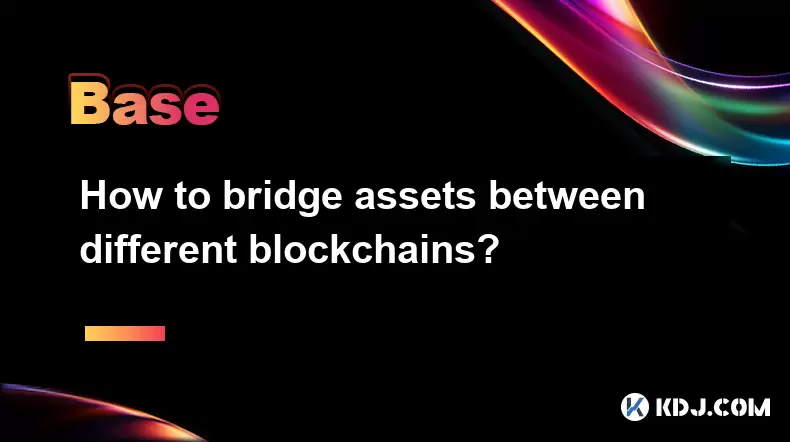-
 Bitcoin
Bitcoin $118100
-0.44% -
 Ethereum
Ethereum $3585
5.43% -
 XRP
XRP $3.434
5.65% -
 Tether USDt
Tether USDt $1.000
0.02% -
 BNB
BNB $743.8
3.89% -
 Solana
Solana $178.7
3.84% -
 USDC
USDC $1.000
0.03% -
 Dogecoin
Dogecoin $0.2381
12.81% -
 TRON
TRON $0.3270
3.62% -
 Cardano
Cardano $0.8315
4.93% -
 Hyperliquid
Hyperliquid $44.51
-4.42% -
 Stellar
Stellar $0.4710
1.52% -
 Sui
Sui $3.896
-2.51% -
 Chainlink
Chainlink $18.09
6.98% -
 Hedera
Hedera $0.2681
9.31% -
 Bitcoin Cash
Bitcoin Cash $516.7
4.83% -
 Avalanche
Avalanche $23.95
6.96% -
 Shiba Inu
Shiba Inu $0.00001490
5.67% -
 UNUS SED LEO
UNUS SED LEO $8.966
0.80% -
 Toncoin
Toncoin $3.294
4.39% -
 Litecoin
Litecoin $105.4
4.69% -
 Polkadot
Polkadot $4.356
5.30% -
 Uniswap
Uniswap $10.29
17.25% -
 Monero
Monero $327.9
-3.04% -
 Bitget Token
Bitget Token $4.942
4.33% -
 Ethena USDe
Ethena USDe $1.001
0.08% -
 Pepe
Pepe $0.00001348
2.17% -
 Dai
Dai $1.000
0.02% -
 Aave
Aave $320.8
0.58% -
 Bittensor
Bittensor $411.8
-4.07%
What is the difference between KDJ indicator and MACD indicator?
KDJ indicator measures momentum using K, D, J lines on a 0-100 scale, while MACD uses moving averages to identify trends, suitable for long-term trading.
Apr 01, 2025 at 08:21 pm

The KDJ indicator and the MACD indicator are two popular technical analysis tools used by cryptocurrency traders to predict market trends and make informed trading decisions. While both indicators aim to help traders identify potential buy and sell signals, they differ in their construction, interpretation, and application. In this article, we will explore the key differences between the KDJ and MACD indicators, their unique features, and how they can be used effectively in the cryptocurrency market.
Understanding the KDJ Indicator
The KDJ indicator, also known as the Stochastic Oscillator, is a momentum indicator that measures the relationship between an asset's closing price and its price range over a specific period. It consists of three lines: the K line, the D line, and the J line. The K line represents the current market momentum, while the D line is a moving average of the K line, smoothing out short-term fluctuations. The J line is a more sensitive version of the K line, often used to identify overbought and oversold conditions.
The KDJ indicator is typically displayed as a chart with values ranging from 0 to 100. When the K and D lines cross above the 80 level, it suggests that the market is overbought, and a potential price reversal may occur. Conversely, when the K and D lines cross below the 20 level, it indicates an oversold market, signaling a potential buying opportunity. Traders often look for bullish or bearish crossovers between the K and D lines to confirm trend changes.
Exploring the MACD Indicator
The MACD (Moving Average Convergence Divergence) indicator is a trend-following momentum indicator that shows the relationship between two moving averages of an asset's price. It consists of three components: the MACD line, the signal line, and the histogram. The MACD line is calculated by subtracting the 26-period exponential moving average (EMA) from the 12-period EMA. The signal line is a 9-period EMA of the MACD line, and the histogram represents the difference between the MACD line and the signal line.
The MACD indicator is used to identify potential buy and sell signals based on the crossovers between the MACD line and the signal line. When the MACD line crosses above the signal line, it generates a bullish signal, suggesting that it may be a good time to buy. Conversely, when the MACD line crosses below the signal line, it produces a bearish signal, indicating a potential selling opportunity. Traders also pay attention to the histogram, as its divergence from the MACD line can provide additional insights into market momentum.
Key Differences Between KDJ and MACD
While both the KDJ and MACD indicators are used to analyze market trends and generate trading signals, there are several key differences between them:
- Construction: The KDJ indicator is based on the relationship between an asset's closing price and its price range, while the MACD indicator is derived from the difference between two moving averages.
- Components: The KDJ indicator consists of three lines (K, D, and J), while the MACD indicator comprises three components (MACD line, signal line, and histogram).
- Scale: The KDJ indicator is displayed on a scale of 0 to 100, while the MACD indicator has no fixed scale and can fluctuate above and below zero.
- Sensitivity: The KDJ indicator is generally more sensitive to short-term price movements, while the MACD indicator is better suited for identifying longer-term trends.
- Overbought/Oversold Levels: The KDJ indicator uses fixed overbought (80) and oversold (20) levels, while the MACD indicator does not have predefined levels and relies on crossovers and divergences for signal generation.
Using KDJ and MACD in Cryptocurrency Trading
Both the KDJ and MACD indicators can be valuable tools for cryptocurrency traders, but their effectiveness depends on the trader's strategy and time frame. Here are some tips for using these indicators in the crypto market:
- Short-term Trading: The KDJ indicator is well-suited for short-term trading due to its sensitivity to price movements. Traders can use the KDJ to identify potential entry and exit points based on overbought and oversold conditions and K/D line crossovers.
- Long-term Trading: The MACD indicator is more appropriate for long-term trading, as it helps identify the overall trend and potential trend reversals. Traders can use MACD crossovers and histogram divergences to confirm long-term buy and sell signals.
- Combining Indicators: Many traders use both the KDJ and MACD indicators together to gain a more comprehensive view of the market. By combining the short-term insights from the KDJ with the long-term perspective of the MACD, traders can make more informed decisions and improve their trading performance.
- Risk Management: Regardless of the indicator used, it's crucial for traders to implement proper risk management strategies, such as setting stop-loss orders and managing position sizes, to protect their capital in the volatile cryptocurrency market.
Limitations and Considerations
While the KDJ and MACD indicators can be powerful tools for cryptocurrency traders, it's important to be aware of their limitations and use them in conjunction with other analysis techniques:
- False Signals: Both indicators can generate false signals, especially in choppy or sideways markets. Traders should always confirm signals with other indicators or price action before making trading decisions.
- Lag: The MACD indicator, in particular, can lag behind price movements due to its reliance on moving averages. Traders should be cautious when using the MACD in fast-moving markets.
- Market Context: The effectiveness of both indicators can vary depending on the specific cryptocurrency and market conditions. Traders should adapt their strategies and indicator settings based on the asset they are trading and the prevailing market environment.
- Over-reliance: Relying solely on technical indicators without considering fundamental factors or market sentiment can lead to suboptimal trading decisions. Traders should use indicators as part of a broader analysis framework.
Common Questions About KDJ and MACD Indicators
Q: Can I use the KDJ and MACD indicators together in my trading strategy?
A: Yes, many traders use both the KDJ and MACD indicators together to gain a more comprehensive view of the market. The KDJ can provide short-term insights, while the MACD can help identify longer-term trends. By combining the signals from both indicators, traders can make more informed decisions and potentially improve their trading performance.
Q: Which indicator is better for short-term trading, KDJ or MACD?
A: The KDJ indicator is generally better suited for short-term trading due to its sensitivity to price movements. The KDJ can help traders identify potential entry and exit points based on overbought and oversold conditions and K/D line crossovers. However, it's important to use the KDJ in conjunction with other analysis techniques and risk management strategies.
Q: How can I use the MACD indicator to identify trend reversals in the cryptocurrency market?
A: To identify potential trend reversals using the MACD indicator, traders can look for the following signals:
- MACD Line Crossovers: When the MACD line crosses above the signal line, it generates a bullish signal, suggesting a potential trend reversal to the upside. Conversely, when the MACD line crosses below the signal line, it produces a bearish signal, indicating a potential trend reversal to the downside.
- Histogram Divergences: If the MACD histogram starts to diverge from the MACD line, it can signal a potential trend reversal. For example, if the price is making new highs, but the MACD histogram is making lower highs, it may indicate a bearish divergence and a potential trend reversal.
Traders should always confirm these signals with other indicators or price action before making trading decisions based on potential trend reversals.
Q: Are there any specific settings I should use for the KDJ and MACD indicators when trading cryptocurrencies?
A: The default settings for the KDJ indicator are typically 9, 3, and 3 for the K, D, and J periods, respectively. For the MACD indicator, the default settings are usually 12, 26, and 9 for the fast EMA, slow EMA, and signal line periods, respectively. However, these settings can be adjusted based on the trader's strategy and the specific cryptocurrency being traded. Some traders may use shorter periods for more sensitive signals in fast-moving markets or longer periods for smoother signals in less volatile markets. It's important to test different settings and find what works best for your trading style and the assets you are trading.
Q: Can the KDJ and MACD indicators be used for all cryptocurrencies, or are they better suited for specific coins?
A: The KDJ and MACD indicators can be used for all cryptocurrencies, but their effectiveness may vary depending on the specific coin and market conditions. Some cryptocurrencies, such as Bitcoin and Ethereum, tend to have more liquidity and follow technical indicators more closely. Other, less liquid cryptocurrencies may exhibit more erratic price movements, making it more challenging to rely solely on technical indicators. Traders should always consider the unique characteristics of the cryptocurrency they are trading and adapt their strategies and indicator settings accordingly. Additionally, it's crucial to use these indicators in conjunction with other analysis techniques and risk management strategies to improve trading performance across different cryptocurrencies.
Disclaimer:info@kdj.com
The information provided is not trading advice. kdj.com does not assume any responsibility for any investments made based on the information provided in this article. Cryptocurrencies are highly volatile and it is highly recommended that you invest with caution after thorough research!
If you believe that the content used on this website infringes your copyright, please contact us immediately (info@kdj.com) and we will delete it promptly.
- Freedom Gold Pack: The Legacy Coin Defining 2025
- 2025-07-19 06:30:13
- Trump, the GENIUS Act, and Stablecoin Regulations: A New Era for Crypto?
- 2025-07-19 06:50:12
- Pi Network's Ecosystem Challenge: App Studio Sparks Innovation
- 2025-07-19 06:55:13
- Zebec Network's Bullish Engulfing Pattern: Price Forms and Future Outlook
- 2025-07-19 06:30:13
- XRP, Ripple, Bitcoin, Ethereum: Decoding the Crypto Landscape
- 2025-07-19 05:50:13
- Penny Altcoins Eyeing $1 in Q3 2025: Cardano, BlockchainFX, and the Hunt for Crypto Gold
- 2025-07-19 05:10:13
Related knowledge

What is airdrop farming?
Jul 19,2025 at 03:56am
What Is Airdrop Farming?Airdrop farming is a term that refers to the process of accumulating tokens or coins through participating in airdrops and yie...

How to run a Bitcoin node?
Jul 19,2025 at 06:43am
What is a Bitcoin Node?A Bitcoin node is a software program that connects to the Bitcoin network and helps validate and relay transactions and blocks....

How to bridge assets between different blockchains?
Jul 19,2025 at 04:07am
Understanding Cross-Chain BridgingBridging assets between different blockchains refers to the process of transferring digital assets—such as tokens or...

Is it safe to keep my crypto on an exchange?
Jul 19,2025 at 08:07am
Understanding the Risks of Storing Crypto on ExchangesWhen users decide to store their cryptocurrency on an exchange, they are essentially entrusting ...

How to get a crypto wallet?
Jul 19,2025 at 03:15am
What is a Crypto Wallet and Why Do You Need One?A crypto wallet is a digital tool that allows individuals to store, send, and receive cryptocurrencies...

What is the Bitcoin dominance index
Jul 12,2025 at 10:35pm
Understanding the Bitcoin Dominance IndexThe Bitcoin Dominance Index, often abbreviated as BTC.D, is a metric used to measure Bitcoin's market capital...

What is airdrop farming?
Jul 19,2025 at 03:56am
What Is Airdrop Farming?Airdrop farming is a term that refers to the process of accumulating tokens or coins through participating in airdrops and yie...

How to run a Bitcoin node?
Jul 19,2025 at 06:43am
What is a Bitcoin Node?A Bitcoin node is a software program that connects to the Bitcoin network and helps validate and relay transactions and blocks....

How to bridge assets between different blockchains?
Jul 19,2025 at 04:07am
Understanding Cross-Chain BridgingBridging assets between different blockchains refers to the process of transferring digital assets—such as tokens or...

Is it safe to keep my crypto on an exchange?
Jul 19,2025 at 08:07am
Understanding the Risks of Storing Crypto on ExchangesWhen users decide to store their cryptocurrency on an exchange, they are essentially entrusting ...

How to get a crypto wallet?
Jul 19,2025 at 03:15am
What is a Crypto Wallet and Why Do You Need One?A crypto wallet is a digital tool that allows individuals to store, send, and receive cryptocurrencies...

What is the Bitcoin dominance index
Jul 12,2025 at 10:35pm
Understanding the Bitcoin Dominance IndexThe Bitcoin Dominance Index, often abbreviated as BTC.D, is a metric used to measure Bitcoin's market capital...
See all articles

























































































